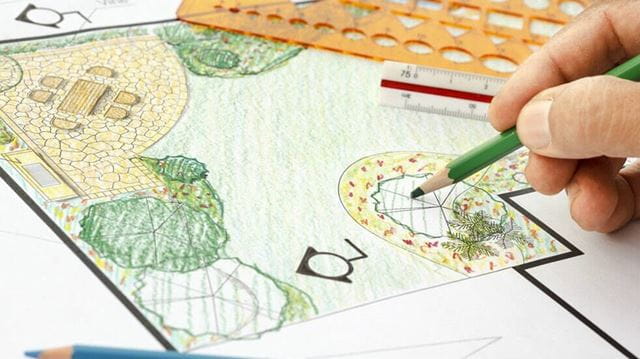
At this time of year it’s a good idea to take stock of your garden and make structural and design changes...
1. What to ask yourself
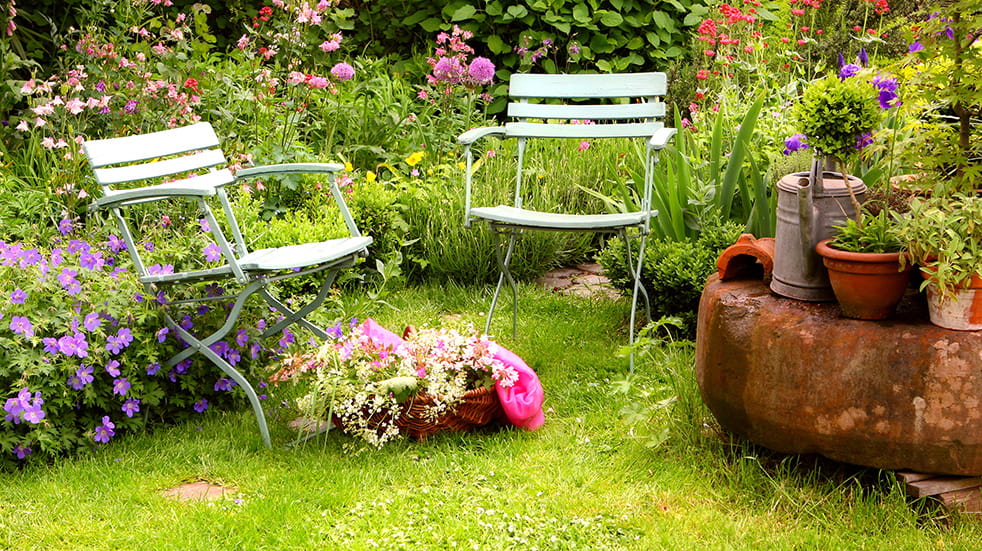 When you’re re-evaluating your space, think about the shapes and lines your garden makes. Take a look from an upstairs window and see if it flows from one area to another; do the paths make logical and useful connections throughout the space? Are there any focal points in your garden? Where does the eye naturally travel? Are there areas where changes need to be made to the structure? Would a mowing strip between the lawn and borders make life easier? Does a patio need to be extended or moved? Would a different style of boundary make more sense? Should a bed or border be moved or remodelled? Could you do with another seating area in that sunny spot at the end of the garden? Now is the time to make those plans.
When you’re re-evaluating your space, think about the shapes and lines your garden makes. Take a look from an upstairs window and see if it flows from one area to another; do the paths make logical and useful connections throughout the space? Are there any focal points in your garden? Where does the eye naturally travel? Are there areas where changes need to be made to the structure? Would a mowing strip between the lawn and borders make life easier? Does a patio need to be extended or moved? Would a different style of boundary make more sense? Should a bed or border be moved or remodelled? Could you do with another seating area in that sunny spot at the end of the garden? Now is the time to make those plans.
2. Visualise the changes
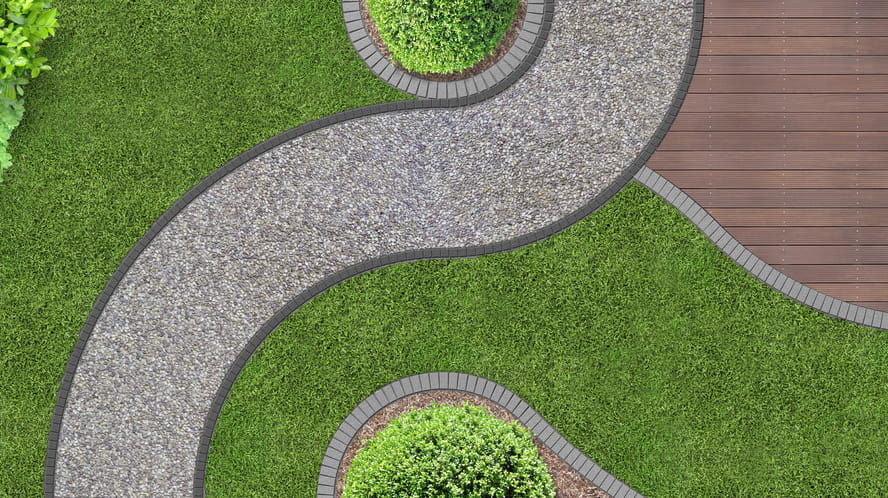 Take a couple of pictures of your garden and print them out. Then cover with tracing paper and map out the new layout in pencil, erasing and tweaking until you’ve got it right. This will help you to see how a new path or a different shaped border would work with the rest of your garden.
Take a couple of pictures of your garden and print them out. Then cover with tracing paper and map out the new layout in pencil, erasing and tweaking until you’ve got it right. This will help you to see how a new path or a different shaped border would work with the rest of your garden.
3. Make a scale plan
 Once you’ve decided on the changes you’re going to make to your garden, it’s helpful to make a scale drawing. First you’ll need to measure your garden – not just the length of boundaries and adjacent buildings, but the position of trees and shrubs in relation to the buildings, too. Transfer these measurements to paper using a scale rule – a scale of 1:50 is usually the most practical – marking in the trees, hard landscaping and shrubs you’re going to keep.
Once you’ve decided on the changes you’re going to make to your garden, it’s helpful to make a scale drawing. First you’ll need to measure your garden – not just the length of boundaries and adjacent buildings, but the position of trees and shrubs in relation to the buildings, too. Transfer these measurements to paper using a scale rule – a scale of 1:50 is usually the most practical – marking in the trees, hard landscaping and shrubs you’re going to keep.
4. Now use your imagination
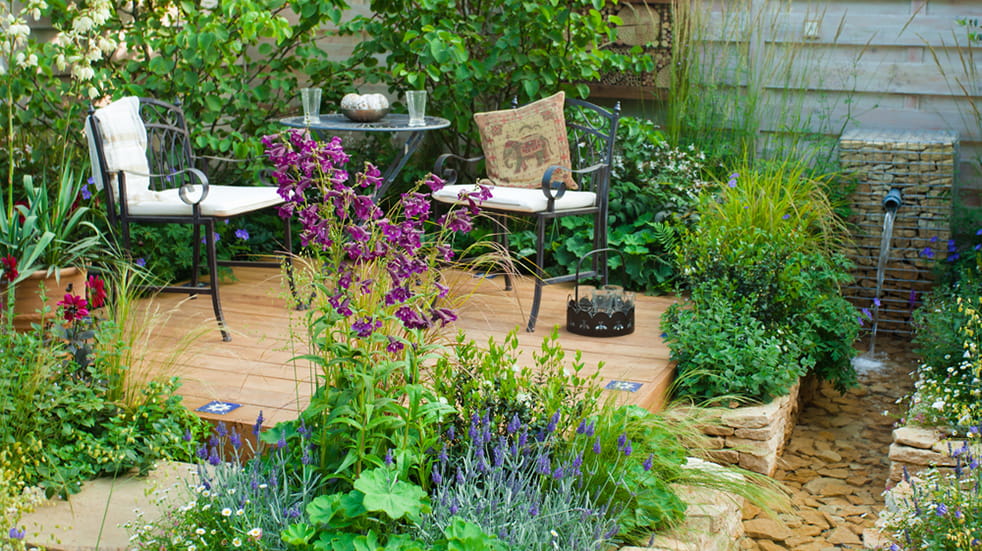 The first rule of patios is that they must be big enough to accommodate your table and chairs comfortably –and that means when the chairs are pushed out, too. So anything less than 3m square just won’t work, and that’s for the smallest patio. Think about these hard landscaping elements first – the paths and patios – then use what remains for beds and borders. And create different ‘rooms’ in your garden if you can, so that something always remains hidden. Be as generous as you can with the size of flowerbeds. Anything less than 1m deep will look mean and lack impact.
The first rule of patios is that they must be big enough to accommodate your table and chairs comfortably –and that means when the chairs are pushed out, too. So anything less than 3m square just won’t work, and that’s for the smallest patio. Think about these hard landscaping elements first – the paths and patios – then use what remains for beds and borders. And create different ‘rooms’ in your garden if you can, so that something always remains hidden. Be as generous as you can with the size of flowerbeds. Anything less than 1m deep will look mean and lack impact.
Don’t forget about height. If everything is pretty much at ground level, you’ll end up with a dull garden. Pergolas, sheds and trees will all help to add vertical interest.
5. Make a planting plan
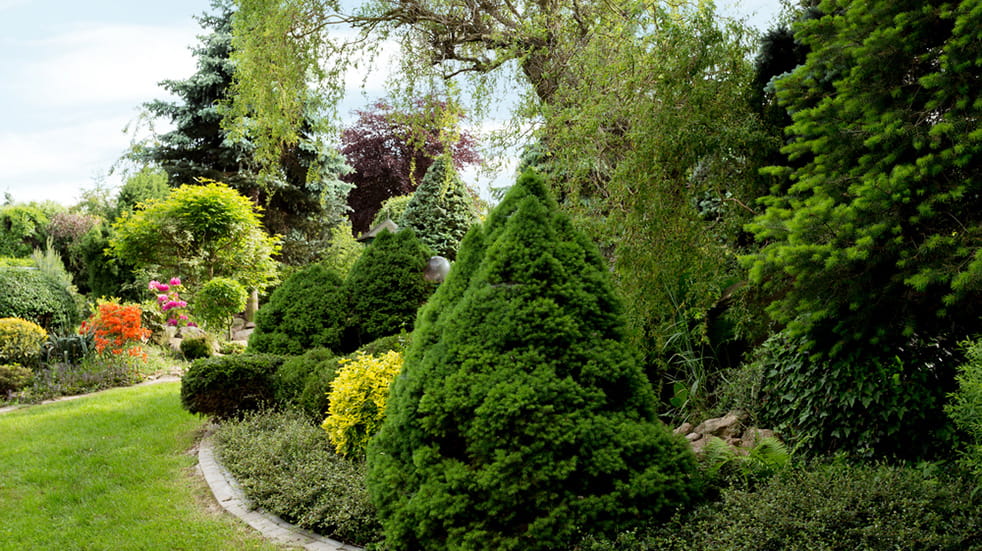 Once you’ve decided on the hard landscaping layout and materials, think about the plants you can buy and put in in spring. Always choose the right plant for the right place, so know where your garden is shady, whether the soil is heavy clay, friable loam or sandy, and take a soil pH test to find out whether it’s neutral, alkaline or acid. Then choose accordingly. And don’t be swayed by flower colour; instead make choices based on evergreen leaf colour and texture. Aim for half of your plants and shrubs to be evergreen, so you’ll have year-round colour and interest, with plenty of shrubs for structure and form, then mix up large-leaved plants with those with delicate leaf shapes. Lastly choose your bulbs and herbaceous perennials to add flowers throughout the se
Once you’ve decided on the hard landscaping layout and materials, think about the plants you can buy and put in in spring. Always choose the right plant for the right place, so know where your garden is shady, whether the soil is heavy clay, friable loam or sandy, and take a soil pH test to find out whether it’s neutral, alkaline or acid. Then choose accordingly. And don’t be swayed by flower colour; instead make choices based on evergreen leaf colour and texture. Aim for half of your plants and shrubs to be evergreen, so you’ll have year-round colour and interest, with plenty of shrubs for structure and form, then mix up large-leaved plants with those with delicate leaf shapes. Lastly choose your bulbs and herbaceous perennials to add flowers throughout the se



